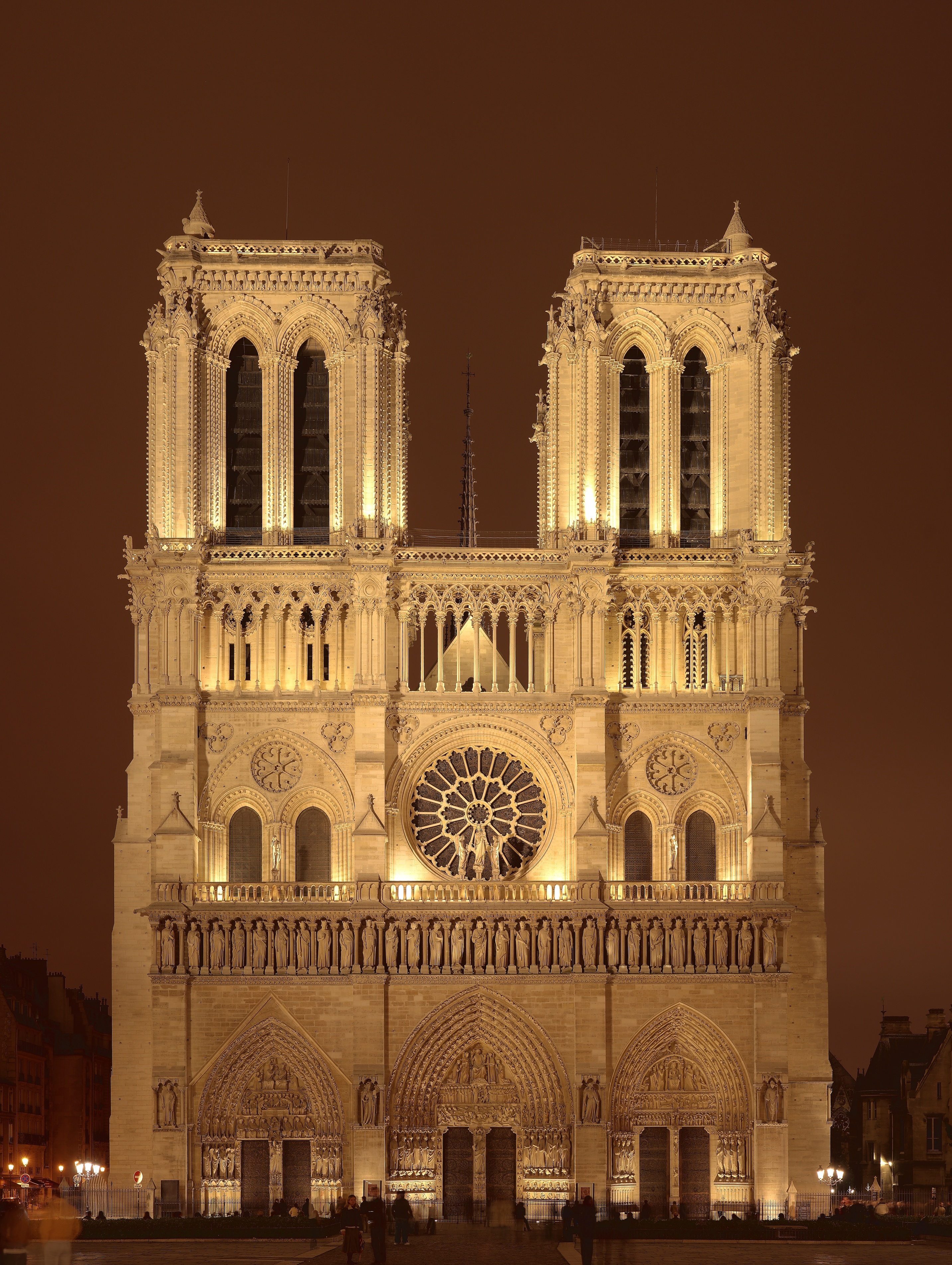It was during this period that Europe began to rise to prominence in a way which established trade routes and build upon Western culture as it was developing pre-Renaissance.
Gothic Architecture
Gothic Architecture is possibly the most notable use of design during this period, responsible for the ornate decoration of churches and other religious architecture, as this developed into the Renaissance styles we're familiar with, it became known as "International Gothic".
During the Medieval period the Gothic style particularly flourished in regards to building and infrastructure such as castles, palaces, cathedrals etc. The influence extended into the eventual construction of the "Doge's Palace" in Venice, the "Palais des Papes" in Avignon and various other cities such as Prague, Barcelona and Navarre.
 |
| Notre-Dame de Paris, France, Completed c. 1345. |
The Notre-Dame de Paris in France, as pictured above, is an iconic masterpiece of Gothic Architecture. Completed around the year of 1345, the Notre-Dame is a historically noteworthy Catholic cathedral. The building is unique to previous architecture as in it's construction, it is one of the first to involve a flying buttress, a feature of Parisian Gothic architecture. This consists of vertical masonry to withstand lateral pressure and an arch shape between the buttress and the buildings exterior.
 |
| Stained Glass 'Transept Rose' interior of the Notre-Dame in Paris. |
Interiors were also a focus of Gothic architecture, highlighted in the Notre-Dame by the transept rose, featuring intricate stained glass, gargoyles and religious imagery which all culminates in an effectively grotesque, heavily ornate and dark stylization of architecture in Northern Europe.
Key influences on Gothic Art
Key artists from this period of art history include Giovanni Pisano, an Italian sculptor who worked on the Siena and Pisa Cathedrals, many of the most prominent works by Pisano include Madonna and Child and The Crucifixion, enhancing the idea that much of the sculpture of the time was highly religious. Jacopo Bellini is an example of a typical Gothic painter, responsible for the founding of the Early Renaissance period, his paintings are reminiscent of the flat and stylized linear painting with a lack of perspective as appearing in his painting of Madonna and Child c. 1455.
It is easy to compare the two images below, both by vastly different artists of the period and conducted in two completely different formats, Bellini's in painting and Pisano's in sculpture. The vital comparison is the scene of Madonna and Child that both artists are trying to depict. This emphasises the focus that Gothic art and Early Renaissance art had on the religious themes and decoration for cathedrals etc.
 |
| Giovanni Pisano's "Madonna and Child" sculpture from the baptistry, Pisa Cathedral. |
 |
| Jacopo Bellini's, "Madonna and Child" painting, c. 1455. |
To conclude, Gothic Art was responsible largely for the beginning of the Early Renaissance era and the return to faith based imagery, this was art for the purpose of decoration, mostly in regards to both exterior and interior construction and architecture. Much of the building made during this period can still be seen in regions of Northern Europe such as France, Spain and Italy.


0 comments:
Post a Comment